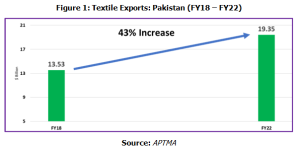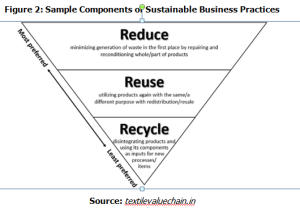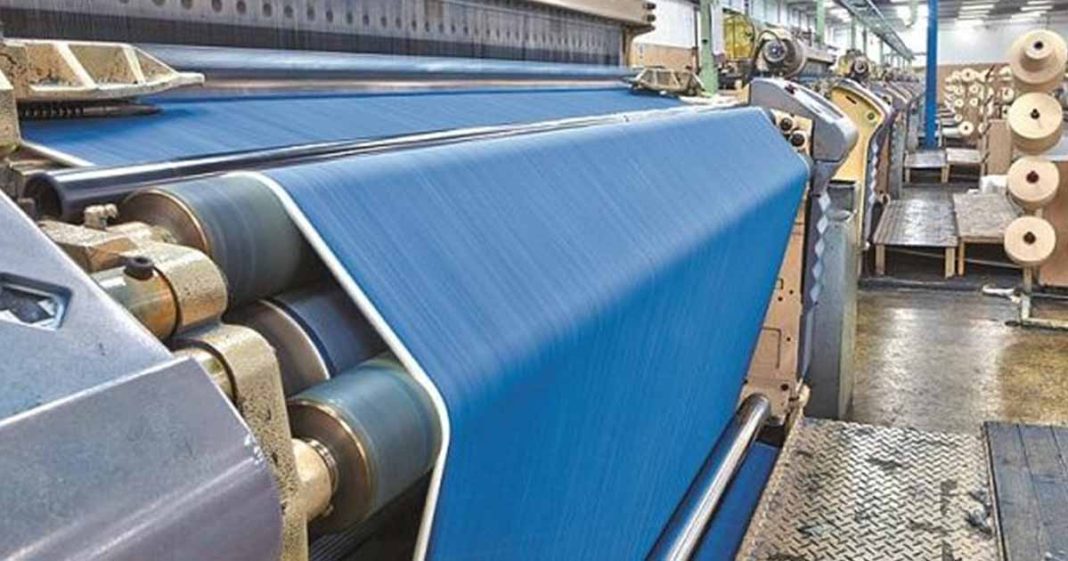One of the most important industrial sectors, the textiles industry contributes significantly to national economies, job creation, and exports in developing nations such as Pakistan. The size of the global textile market, estimated at USD 993.6 billion in 2021, is expected to increase at a 4.0% compound annual growth rate (CAGR)according to a report by Mordor Intelligence. In 2021, Asia Pacific held the highest share of the textile market. China leads the global textile exports, meanwhile, Pakistan has a share of 2% in global textile exports. All of the world’s major textile economies, including Pakistan, have grown in the first nine months of 2022.
Due to the ongoing global recession, there are concerns about a decline in the most recent quarter, however, unusual growth occurred in the first three quarters of 2022. China, Bangladesh, Indonesia, Vietnam, Italy, Turkey, Germany, and Pakistan all saw strong increases in textile exports. Pakistan’s textile exports scaled by 5% in the first quarter of FY23 compared to September’21.
Read more: Effective Energy Allocation for Export Growth

However, export numbers are not the only benchmark of performance for textile industries in the twenty-first century. If textile firms follow Sustainable Business Practices and show a satisfactory status of Sustainable Business Practices, only then they be able to compete in the modern world. Simply stated, making a profit while also having a positive impact on society (the people), and the environment (the planet) is only possible with sustainable business practices – the three Ps.
Understanding the matter better
In today’s corporate world, sustainability is a critical component of social and environmental responsibility and is a fundamental first step in protecting the earth for future generations. These practices not only save money, cut down on waste, and save natural resources, but they also aid in protecting the environment and its inhabitants of it.
A few examples of Sustainable Business Practices include using renewable energy, manufacturing environmentally friendly products, recycling and reduction of waste, sustainable packaging, composting, ethical sourcing, sustainable supply chain management, employee welfare, fulfilling corporate environmental and social responsibility and finally sustainability reporting.

Even though the textile sector of Pakistan is seen as one of the most significant sectors from an economic perspective, the supply chain for this sector is plagued by serious environmental and social issues. The primary environmental issue connected to the textile industry is the pollution of water bodies brought on by the discharge of untreated effluents. The sector also contributes to air pollution as dust, cotton lint, and other pollutants are produced during spinning and weaving, which worsens the working environment.
Environmental protection was once the textile industry’s most neglected sector, but as people’s awareness of the issue has grown in response to the depletion of nonrenewable resources, the effects of climate change, and ecological destruction, it is now widely acknowledged that a more responsible approach to the environment is required.
Read more: Pakistan single window: A digital revolution
Pakistani textile firms are continuously striving hard to adopt Sustainable Business Practices. One of the examples is that of Net Zero Pakistan. It is a national partnership involving cutting-edge businesses, government organizations, and sectoral specialists to achieve Pakistan’s objective of net zero carbon by 2050. The alliance is on its way to setting out the plan and structure by which Pakistan’s private sector may hasten its transition to sustainability and accomplish this net zero objective.
Out of the 23 signatories of this partnership, 22 belong to the textile and apparel sector such as Gohar Textiles, Crescent Bahuman and many others. The signatories have committed and set net-zero targets, affirmed to measure and disclose transparently the levels and sources of GHG emissions, vowed to decarbonize value chains and lastly have shown interest in advocating for climate action.
The textile sector is also actively engaging in international conventions and platforms such as ‘Better Work Programme’, ‘Decent Work Country Programme-IV (2023-27)’, and ‘The Accord on Fire and Building Safety, to name a few. Moreover, in lieu of its Corporate Social Responsibility (CSR) initiatives, the All Pakistan Textile Mills Association (APTMA) has recently signed an MOU with National Emergency Operations Centre for Polio Eradication Initiative, a national coordination body of the Government of Pakistan to create an enabling environment to achieve a shared objective of attaining a healthy future by eradicating polio from Pakistan.
According to numerous analyses of empirical studies, the textile firm’s efforts to manage the environment are positively impacted by regulatory pressure (Jeswani et al. 2008; Babiak and Trendafilov 2011; Ervin et al. 2013). As an illustration, earlier studies have shown that firms are more receptive to regulatory factors and to taking part in voluntary environmental programs (Delmas and Toffel 2004; Jeswani et al. 2008). The reasons for going sustainable are industry agreements, regional environmental regulations, and national environmental regulations regarding water, waste, and energy efficiency.
Read more: Economic growth amid political instability
Sustainability
The reasons for going sustainable are also regional environmental regulations regarding water, waste, and energy efficiency(Sharma & Narula, 2020). Pakistani textile firms are, for example, under regulatory pressure by the European Union’s (EU’s) Scheme of Generalized Scheme of Preferences Plus (GSP+) to avail of duty-free export to the EU. They are actively displaying a responsible attitude in the quest for a better position against such regulatory pressures.
The government’s environmental rules and regulations strengthen the management of Pakistani textile companies’ desire to put these methods into effect and aid in the improvement of their environmental performance. Despite the financial constraints they face, the impact of regulatory body pressure demonstrates that businesses are willing to invest resources to stop environmental deterioration given proper backing from government programs. Instead of viewing regulatory pressure as a danger, they view it as an opportunity to become more environmentally friendly.
Competitive pressures are known to drive businesses to differentiate their products, boost production, and ultimately persuade them to embrace environmental management techniques. According to empirical research, market forces such as competition and demand are crucial in driving businesses to embrace sustainable practices. According to several empirical studies (Chkanikova and Mont 2015; Jeswani et al. 2008; Sgaard Jorgensen et al. 2010; Wu- et al. 2012), companies that were under more intense competitive pressure were more likely to adopt their competitors’ business models in order to maintain or even increase their competitive advantage. Pakistan accounts for a sizeable portion of worldwide textile exports, and in order to compete in the market, textile producers must satisfy customers’ environmental demands.
Textile firms are also influenced by market competition to enhance their environmental performance. Competition pressure has an impact on sustainability efforts, and green business practices that uphold environmental standards help businesses stay competitive. International brands frequently show a greater willingness to abide by environmental laws and have the brand value to persuade consumers to adopt environmentally friendly habits. Therefore, textile firms frequently use the same technique and create an environmental strategy based on international rivals.
Pakistani textile firms are taking steps to improve environmental performance, such as developing long-term contractual relationships with their suppliers, contractors, and agencies with proven credentials in waste recycling. Other actions done by them to ensure sustainability include selling cotton waste produced during spinning to be used in the production of inferior yarn and other home furnishings. These activities aid firms in expanding into new market niches, growing their local and international businesses, and maintaining their competitiveness as a result of which they see an increase in market share.
Furthermore, a positive relationship between the impact of “demand from foreign buyers” on sustainable business practices exists, according to prior research (Menguc et al. 2010). Market pressure has been shown to positively influence a firm’s commitment to environmental protection, increase investment in environmental management practices, and encourage environmental collaborations.
Read more: Pakistan: The economic focus
The production process in Pakistani textile firms also complies with textile standards including GOTS (Global Organic Textile Standards) and BCI (Better Cotton Initiative). These standards outline internationally accepted criteria that guarantee textiles are organic, including ecological and social norms supported by independent certification of the full textile supply chain. These standards allow textile producers and processors to export their organic fabrics with a single certification that is recognized in all important markets, leading to an increase in sales and total revenues for the firms. Nevertheless, several factors exist that impede textile firms from adopting sustainable business practices along with their quest to pursue Sustainable Business Practices.
According to empirical research, administrative attitudes and dedication matter a lot when it comes to a firm’s decision-making and adoption of environmental management techniques (Petrini and Pozzebon, 2010; Wu- et al., 2012). Lack of internal environmental expertise, a lack of skilled human resources and environmental issue management skills, a lack of support from top management, and ultimately a communication gap from top management are the primary causes that cause managerial hurdles.
The technological capabilities of businesses may also have an impact on the adoption of sustainable business practices. According to certain studies, businesses with greater Research and Development(R&D) facilities may use more pollution control techniques to green their supply chains (Harrington et al. 2008; Ervin et al. 2013). Furthermore, organizational hurdles are sometimes a result of the lack of appropriate benchmarking tools. Government information and support for domestic businesses to use sustainable practices are lacking.
Sustainable Business Practices are adversely impacted if the company has economic obstacles such as high implementation costs and a lack of financial resources. Since the textile sector requires a lot of money, financial recovery takes time. They have little money or resources to spend on high-cost technical advancement, and Pakistani textile companies frequently choose low-cost technological solutions for production.
Read more: Why exports in Pakistan need special attention?
Pakistani textile companies are just beginning to incorporate Sustainable Business Practices. A lagging behind status is also a result of the different economic and institutional challenges that businesses in developing countries—such as Pakistan—face compared to those in rising economies.
The way forward
Our textile businesses recognize and agree that the health and development of the textile industry depend on the natural environment and its preservation. Internal management and organizational constraints do not have a substantial impact on the firm’s operations, however a variety of factors including the regulatory, market, and economic considerations are more relevant in forcing firms to adopt sustainable practices. In textile companies, external considerations (such as the danger of loss of markets) rather than internal ones are what is putting pressure on sustainability. However, addressing internal issues could significantly advance sustainability in these businesses.
In order to further improve the scope of sustainability for textile enterprises, greater attention should be placed on the role of regulatory authorities. The businesses should also integrate a sustainable enterprise. To aid in developing that identity, businesses should integrate a sustainable business plan from the very beginning. The training should incorporate knowledge of sustainable practices.
The initial cost of compliance is the main obstacle to implementing these practices when it comes to rules and financial restrictions. In addition, uncertain policy changes, weak enforcement, and low knowledge reduce manufacturers’ acceptance, necessitating cost regulation. Companies that are prepared to adopt environmental measures (especially Small and Mid-size Enterprises) must receive assistance from the government. For instance, if a company has established an effluent treatment plant (ETP), assistance should be offered. Assistance in the form of subsidized loans and credits will also go a long way.
Read more: Enhanced exports: The only economic solution?
Additionally, there shouldn’t be any managerial distinction made between domestic and international customers’ interests; after this is done, attention shall turn to incorporate pollution control strategies. The adoption of proactive environmental policies by businesses should be aided by the strengthening of national and regional legislation. The adoption of a proactive environmental strategy by businesses will help them make the best decisions and commit to more extensive environmental practices. This will be made possible by the strengthening of national and regional legislation.
Written by Shahid Sattar and Amna Urooj
Mr. Shahid Sattar, now Executive Director & Secretary General of All Pakistan Textile Mills Association (APTMA), has previously served as a Member Planning Commission of Pakistan and an advisor to the Ministry of Finance, Ministry of Petroleum, and Ministry of Water & Power.
The views expressed by the writers do not necessarily represent Global Village Space’s editorial policy.














